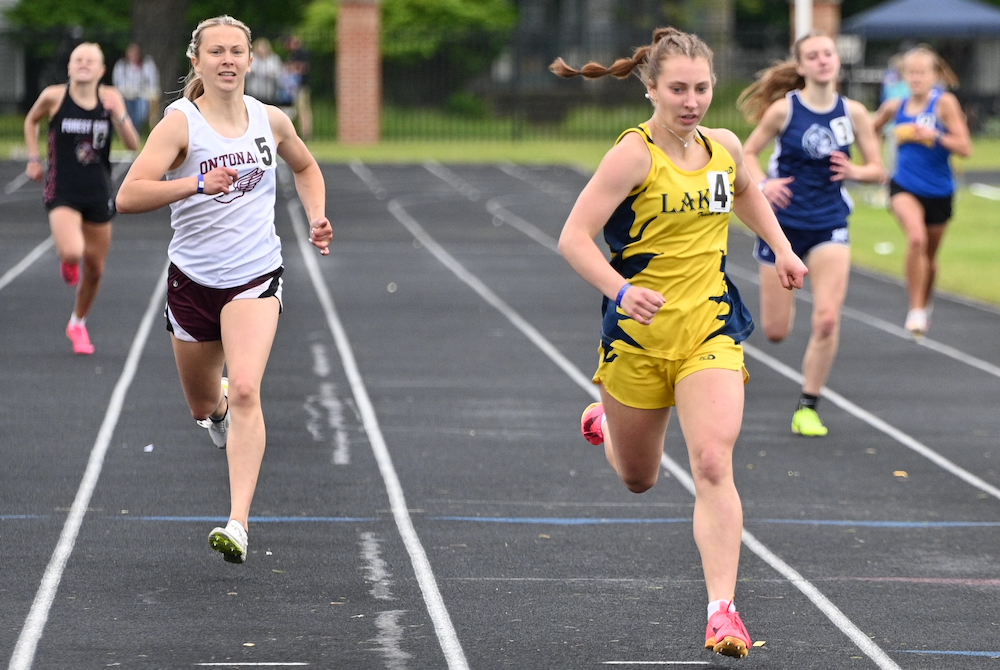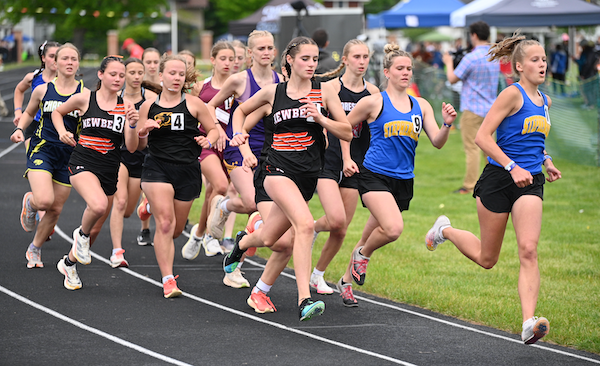
Keep on Coaching
February 1, 2013
By Geoff Kimmerly
Second Half editor
A few weeks ago, I finally got my first chance this season to watch a friend coach his basketball team. After guiding some others at the lower levels, this is his first time running the varsity – something he wasn't sure he wanted to do with a 1-year-old just learning to walk, but a challenge he ended up taking on to the benefit of all those involved.
Simply put, he’s good. I've seen a lot of teams and a lot of coaches over the past 15 years, and although I wouldn't know much of what to do if I were walking the sideline, I felt pretty qualified in telling him I was impressed – even if he didn't buy that I was offering an unbiased opinion. The best news is he’s gone from not sure about this a few months ago to talking about next season.
We know, at least anecdotally, that coaching continues to get more challenging. The time commitment has grown substantially to make running a program a year-round endeavor in a lot of sports at a lot of schools.
That commitment – especially for coaches with children of their own – was a main reason referred to in a New Haven Post-Chronicle story Saturday that noted 23 football coaching openings in Connecticut at one point this offseason. That state has 146 football teams – meaning roughly 15 percent will have new leaders this fall.
And that got me thinking about my friend, about how glad I am he’s given this a shot, and how I've seen so many others either not do so, or not stick around long despite having some pretty nice success.
A study published last winter in Interscholastic Athletic Administration magazine – a product of the National Interscholastic Athletic Administrators Association – noted some predictable results of a study that sought to determine the biggest challenges faced by first-year high school coaches.
The toughest according to the study was balancing the demands of coaching and teaching, experienced by nearly half the respondents – 98 percent of which coached high school teams and 81 percent of which are teachers.
The next six reasons all were noted by at least 30 percent of those in the study – personal fatigue, securing community support, securing and caring for facilities and equipment, parental contact, keeping non-starting players motivated, dealing with schedule interruptions and motivating athletes to achieve consistent, peak performance.
Nothing there is earth-shaking, and most if not all of these challenges are faced by high school coaches regardless of how long they've been in the field. But I got a little more perspective from some of the 32 items that ranked as least challenging to the first-year leaders – keeping in compliance with state and league regulations, dealing with substance abuse issues, teaching sport skills and creating a positive team atmosphere – things that seem most important, and yet appear to be easiest to do. I’m not sure what that tells us – but I think it tells us something.
Click to check out the entire three-page breakdown of the study, plus the researchers’ recommendations to remedy some of what first-year coaches face.
Giving back to Saginaw
I love reading about high-level athletes – like a star-studded group of alums from Saginaw – giving back to where they got their starts.
Pittsburgh Steelers star LaMarr Woodley made a big impact before the start of this school year by donating $60,000 to cover all participation fees for athletes in his former school district. The Saginaw News’ Hugh Bernreuter writes today about how Woodley (Saginaw High), the Philadelphia 76ers’ Jason Richardson (Saginaw Arthur Hill) and former Oakland Raiders standout Stu Schweigert (Saginaw Heritage) have combined to give more than $865,000 back to their home communities.
Bernreuter also mentions the non-monetary contributions of the Golden State Warriors’ Draymond Green (Saginaw High) and former Indianapolis Colts receiver Blair White (Saginaw Nouvel).
Click to read more about it.
Quote(s) of the Week
While rifling through more papers on my desk, I found an article from the Washington Post from Sept. 2011 titled “How high school sports save our schools.” I was drawn to it in part because I spent more than a decade in a newsroom, and it was a piece by a reporter covering education who instead of reporting on school boards and the like, delved into the importance of interscholastic athletics to education as a whole.
He spoke of how participation continues to grow even as resources dwindle, and of data supporting that extracurriculars like sports are more effective than academic classes in teaching leadership, teamwork, time management and “other skills crucial for success in the workplace.” Later, he mentioned a study noting that those who participate in extracurriculars earned more a decade later.
Click here to read the entre piece. These passages struck me most.
“Coaches might be the only faculty members still allowed by our culture and educational practice to get tough with students not making the proper effort. They have the advantage of teaching what are essentially elective non-credit courses. They can insist on standards of behavior that classroom teachers often cannot enforce because the stakes of dismissing or letting students drop their courses are too high. …
“Students do better in activities they choose. If we provide more of them, led by committed adults … that can make a difference. We know the bad news about education. Dropout rates are high. Achievement scores are stagnant. But sports participation is going up, despite pressure to cut it back. Let’s cheer about that and look for a way to draw in more students.”

Jokela Stars Again, Lake Linden-Hubbell Reigns This Time as Outright Champ
By
John Vrancic
Special for MHSAA.com
June 2, 2024
KINGSFORD — Lake Linden-Hubbell junior Emily Jokela had quite a workout here Saturday and has three individual victories to show for it.
The Lakes also benefitted from her effort as they earned the Upper Peninsula Division 3 track & field team championship.
LL-H, which shared the title with Stephenson a year ago, scored 72 points this time. Newberry edged Stephenson 64-62 for the runner-up trophy.
“Our Regional has been tough since 2016,” Lakes’ coach Gary Guisfredi said. “Since that time, teams from our Regional have won the U.P. Finals eight times. Emily scored 38 points alone today. Our shot putter (sophomore Maddy Dudenas) taking third and our girl (sophomore Cleo Milkey) taking fourth in long jump were big points. We knew Newberry and Stephenson were going to be tough.”
Jokela opened with a victory in the 100-meter dash in 13.04 seconds. Later, she set UPD3 Finals records in back-to-back races, taking the 400 (58.61) and 300 hurdles (44.8) prior to placing second in the 200 (27.03).
“My starts were better than usual,” she said. “Those (open 400 and 300 hurdles) are tough races, but you just got to push through that. You always try to prepare for that in practice. I just try to beat everybody to the next hurdle.”
Her effort in the 400 topped the old mark (58.7) by Superior Central’s Lauren Spranger in 2011, and in the hurdles she bested her own record (45.63) from a year ago.
The Lakes, who finished undefeated this year, also won the 800 relay at 1:52.52.
 “I think our handoffs were good,” senior Rebecca Lyons said. “It feels great to be U.P. champions. We were really excited about this meet. We knew Newberry and Stephenson were pretty good.”
“I think our handoffs were good,” senior Rebecca Lyons said. “It feels great to be U.P. champions. We were really excited about this meet. We knew Newberry and Stephenson were pretty good.”
Dollar Bay got a first on sophomore Kiera Isaacson’s leap of 5-3 in high jump.
Newberry, coming off a solid cross country season from last fall, showed its strength in the distances. Sophomore Samantha Taylor set the meet record in the 1,600 (5:14.9), topping the previous best (5:17.2) by Amy Kerst of Munising in 2011. She was followed by freshman Abby Taylor (5:22.7), Stephenson sophomore Faith Cappaert (5:36.7) and Newberry senior Kaylen Clark (5:37.49), who will run at Davenport University this fall.
Clark added a first in the 3,200 (12:33.7), withstanding a challenge from North Dickinson’s Mya Grunlund (12:43.65).
“I knew I had my kick and had to use it today,” Clark said. “I just wanted to defend my title one more time. I think my conditioning from cross country helped me. I missed three meets because of bronchitis. Once I got over that, I did a lot of slow miles. It was a struggle.
“I’ll get to run against Lola (Korpi) again in college. I’m real excited about that. It will also be exciting to do something new.”
Newberry also overcame a slow start to win the 3,200 relay (10:24.16).
“We weren’t too worried,” Abby Taylor said after anchoring that relay. “We knew Kaylen and Sam would close it. I felt pretty relaxed and confident in the final leg.”
Cappaert won the 800 (2:25.91), followed by Abby Taylor (2:33.34) and Clark (2:35.52), and senior Kayela Putnam added a first for the Eagles in pole vault (10-0).
Fourth-place Carney-Nadeau got the bulk of its points in the field events where senior Samantha Kedsch set a meet and school record in long jump at 16-11. Her effort also topped the previous best jump of 16-7½ by Ontonagon’s Olivia Suomis in 2012.
Junior teammate Mariska Laurila won discus with a school-record throw of 114-1 and added a first in shot put (33-1¼), with senior Kelsie Smith taking second (32-5).
Big Bay de Noc got a first from Destiny Bleau, who was clocked at 26.73 in the 200.
PHOTOS (Top) Lake Linden-Hubbell's Emily Jokela sets a meet record in the 400 with a winning time of 58.61 on Saturday. (Middle) Stephenson's Faith Cappaert (11) takes the lead and doesn't relinquish it while winning the 800. (Click for more from Cara Kamps/RunMichigan.com.)

